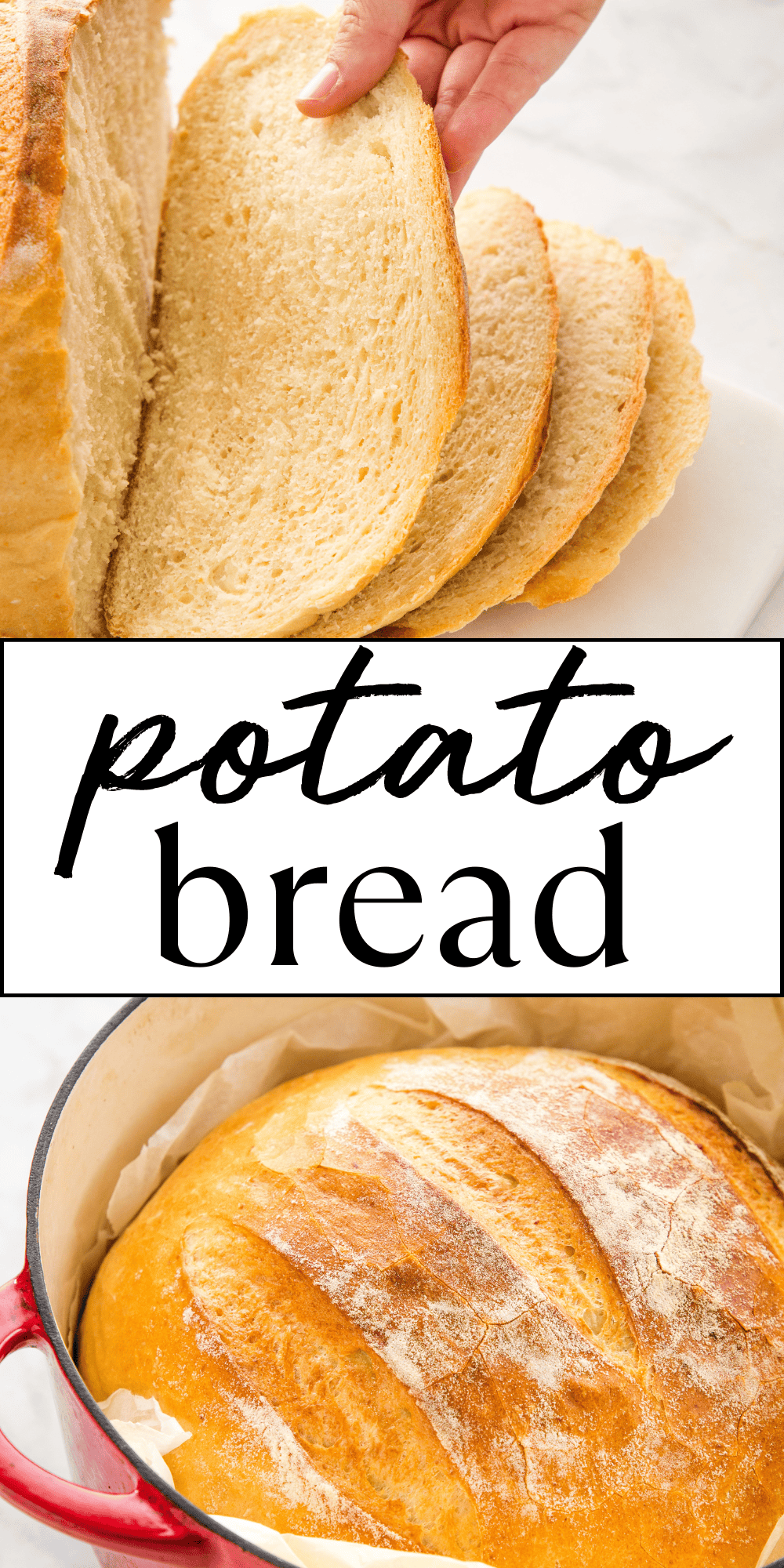This Potato Bread recipe is the best soft and fluffy bread with a thin, crispy crust that’s made with mashed potatoes. Make it as 2 sandwich loaves or one large round loaf!
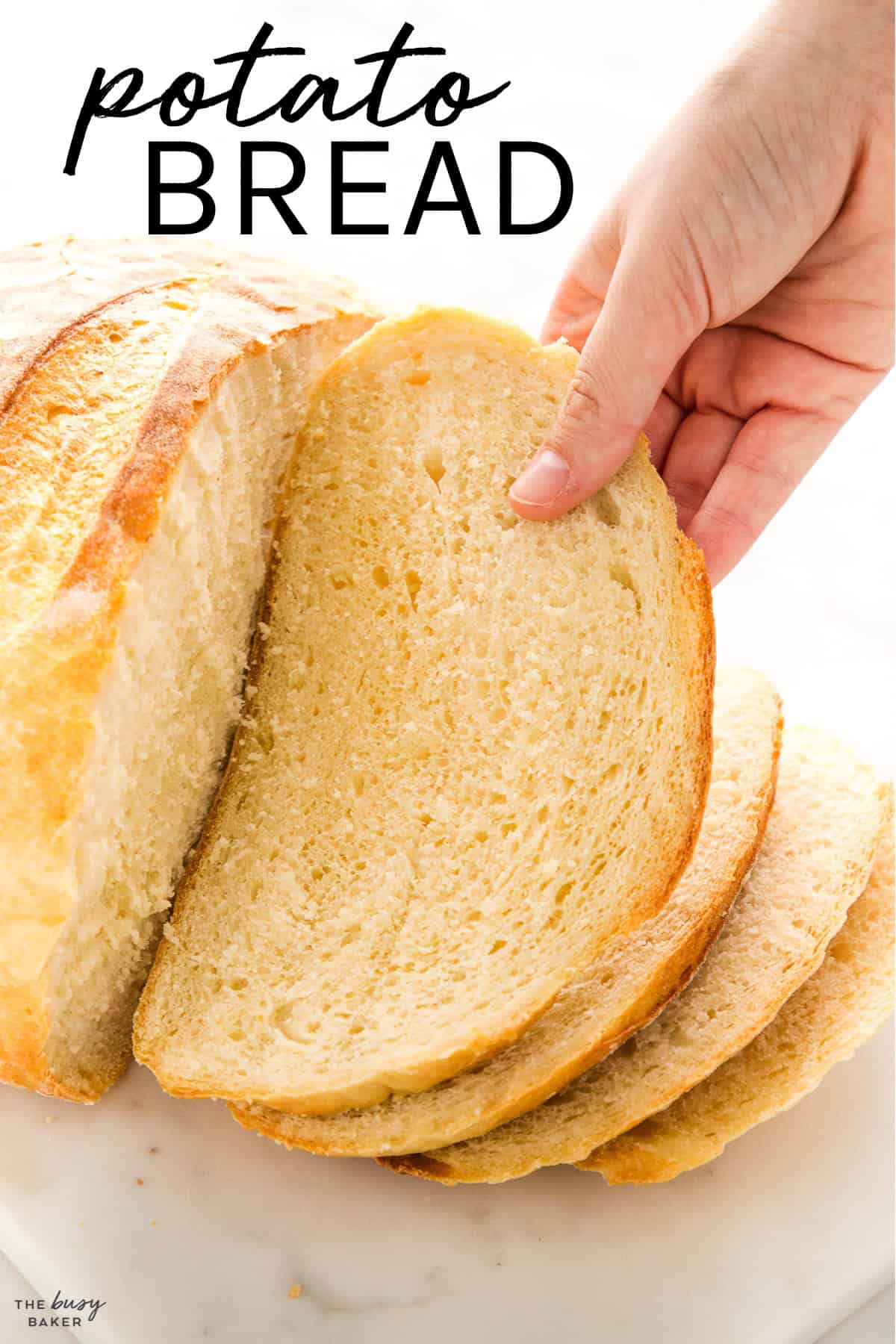
Estimated reading time: 1 minute
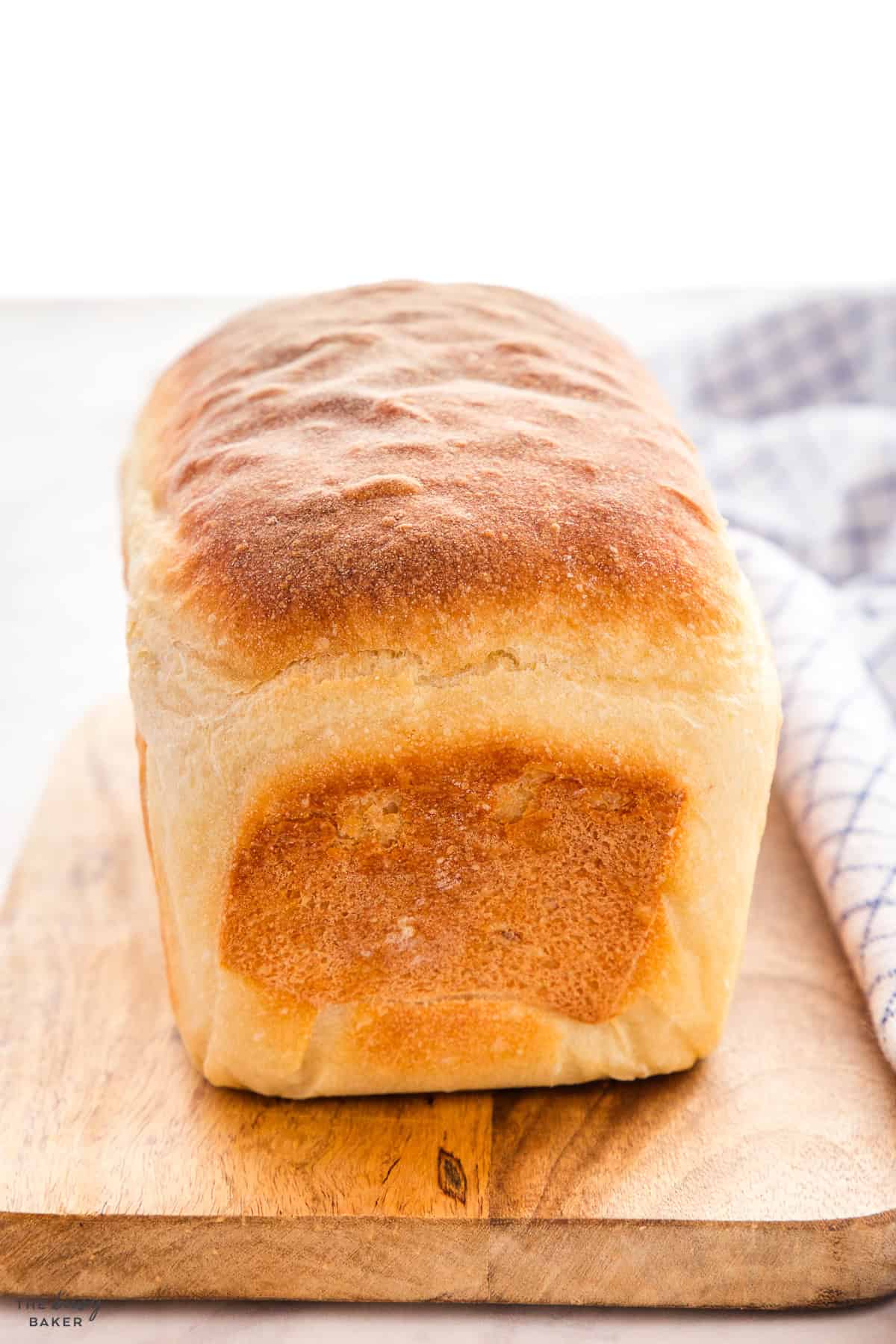
If you like making homemade bread as much as we do, you are going to LOVE this Potato Bread recipe! It’s a recipe we’ve been baking for years and we’ve perfected the soft interior and the rustic, slightly crispy exterior. It’s an easy homemade bread dough made with soft, cooked potatoes and baked to perfection, either as two sandwich loaves or a large round loaf baked in a Dutch oven. It’s hearty, it’s delicious, and it’s perfect for serving with all your favourite fall and winter soups! And the best part? With a few simple tips and tricks it’s easy to make, even for beginners. Trust us, you’re going to LOVE this recipe!
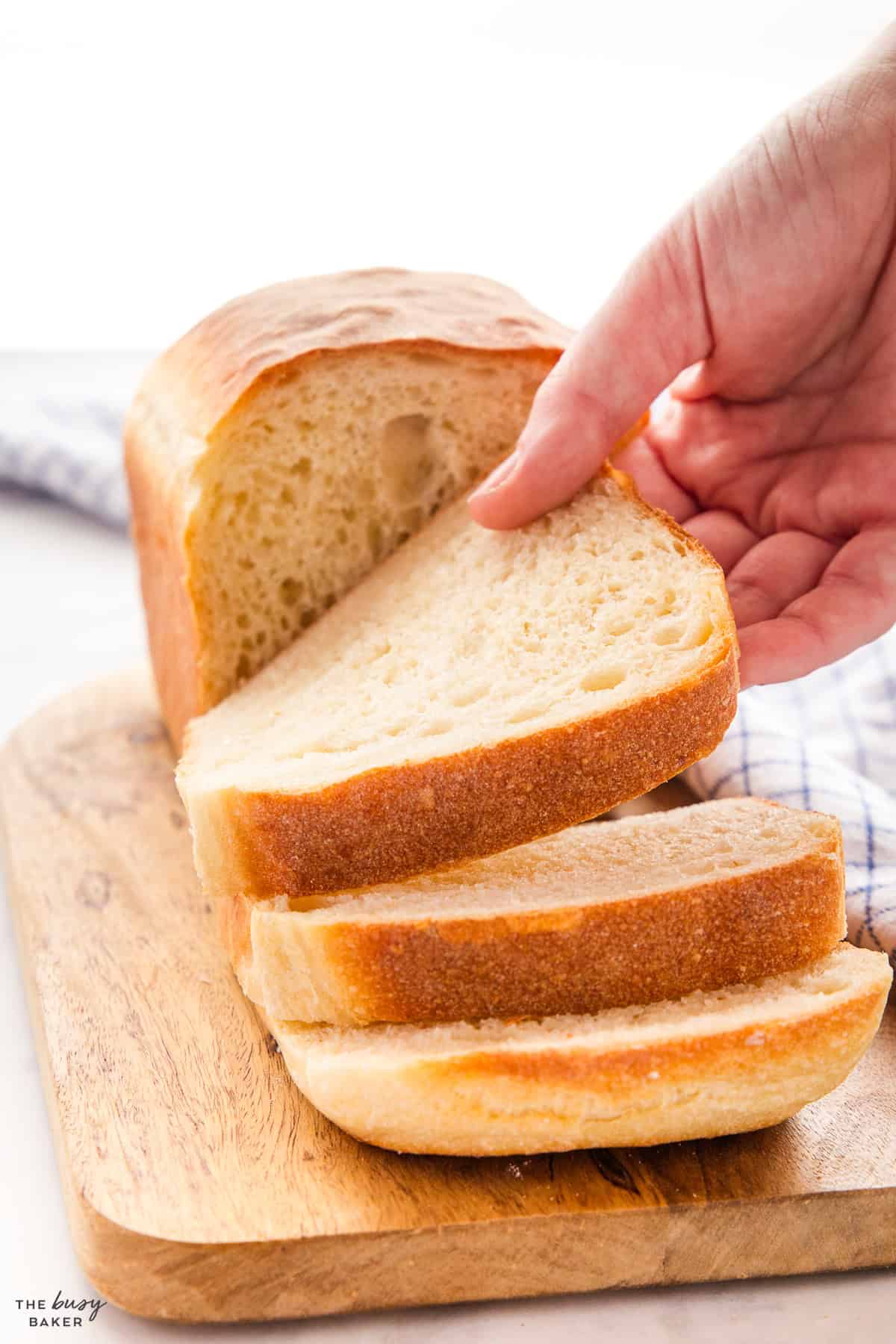
Potato bread is a soft, flavourful bread made by incorporating mashed potatoes or potato flour into the bread dough, giving it a unique texture and taste. Potatoes add moisture and create a tender, fluffy crumb, making it great for sandwiches, toast, or simply enjoying with butter and a bowl of soup.
For beginning bakers, potato bread is an excellent choice because the dough is forgiving and easy to work with, and it yields a delicious loaf that feels rustic and homemade. It can be made by hand, and as sandwich bread in loaf pans or as a large round loaf in a Dutch Oven pot, so it’s great for anyone who has limited kitchen equipment. If you’ve ever wondered what makes that perfect slice extra soft, potato bread is probably the answer!
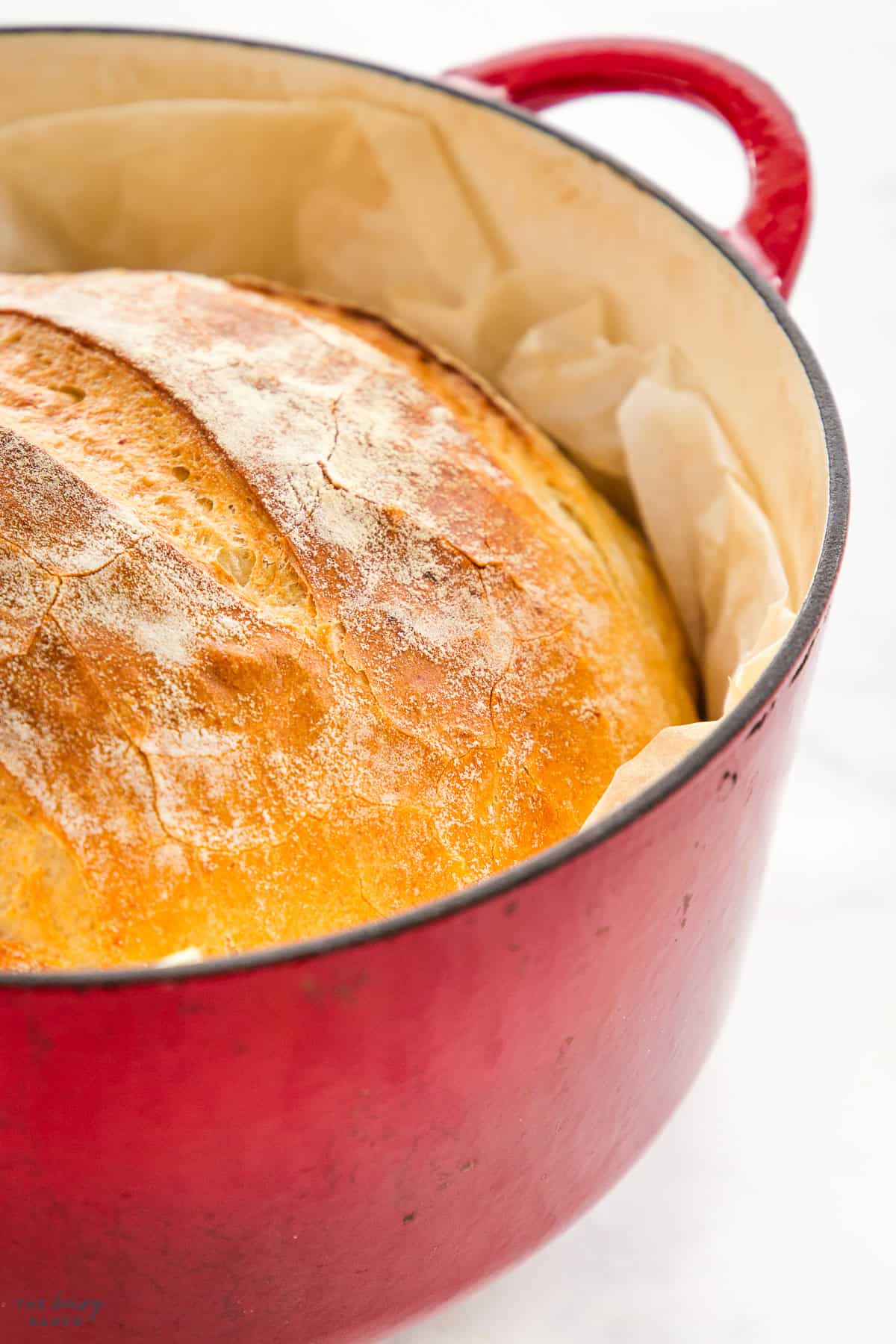
There are countless reasons why this homemade potato bread recipe is a family favourite. Here are just a few:
- It’s EASY to make. Just throw the ingredients into the bowl of your mixer and let it do the work. The dough comes together in minutes and it’s easy to shape after it rises. This recipe is foolproof and kid-friendly!
- It’s SO SOFT and CRUSTY. The added potatoes give this bread a soft and fluffy interior but with the help of our little trick, you can also get the best crust on your bread. We love spreading Garlic Butter on it or eating it with our favourite Meatball Soup
- It’s VERSATILE. Make one big round bread or two loaves. Eat them fresh or pop one in the freezer, whatever works for your family. Baking this bread in a loaf pan makes it great for sandwiches.
- It calls for BASIC INGREDIENTS. This recipe uses basic, straightforward ingredients that are easy to find and may already be in your pantry, making it a super convenient recipe to make in a pinch.
- It FREEZES well. We love making two loaves and freezing one for later. Just let it defrost on the counter, optionally warm it up in the oven for just a few minutes, and you have fresh bread.
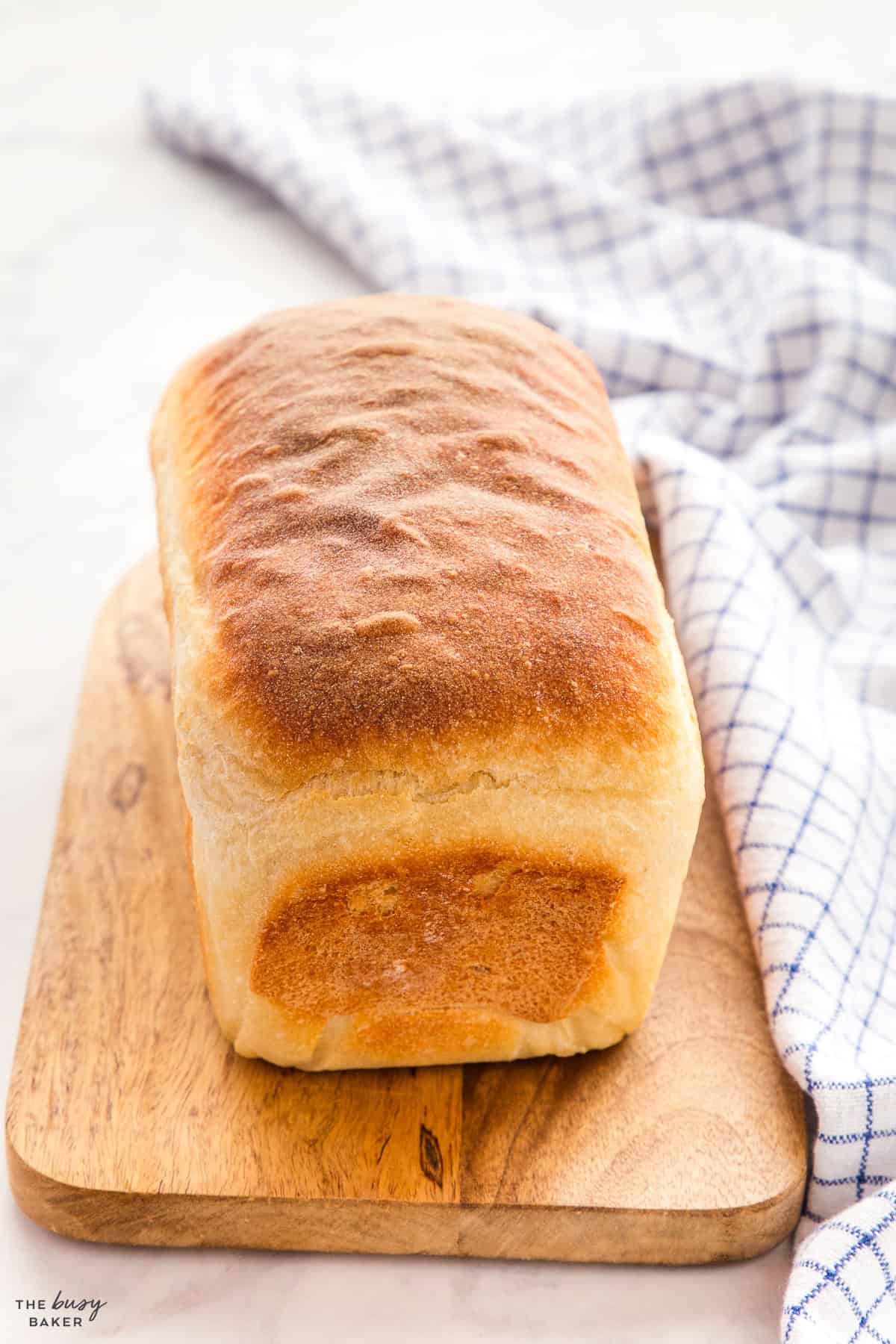
Here’s a list of all our favourite recipes to serve with this delicious potato bread recipe!
- Garlic Butter
- Meatball Soup
- Minestrone Soup
- Best Beef Stew
- Broccoli Cheddar Soup
- Turkey Chili
- Pumpkin Soup (Deutsche Kürbiscremesuppe)
- Roasted Vegetable Soup
- Homemade Hungarian Goulash Soup
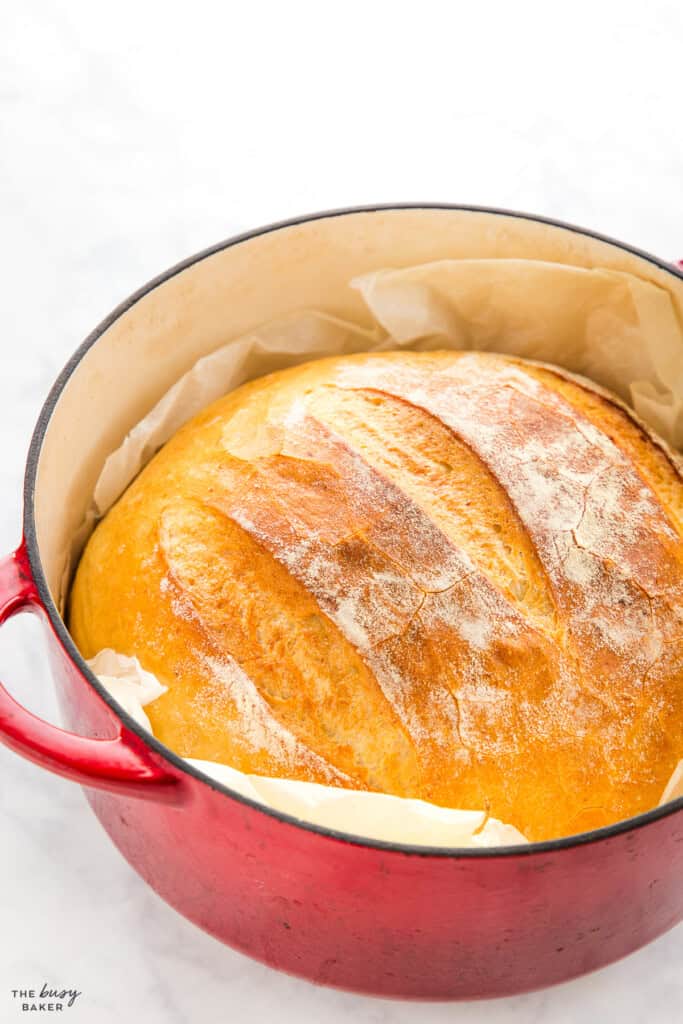
Making potato bread can be easy with just a few simple tricks! Here’s our recommended tips for taking your potato bread to the next level!
Preheat your Dutch oven pot before baking. This will help you create a loaf that’s fluffy and soft on the inside, with the perfect crispy crust. The bread is baked in an oven-safe Dutch oven pot which traps in steam, making the crust of the loaf extra crispy. Preheating the pot before baking helps make the crust even more crispy and golden brown!
You might be tempted to add simple mashed potatoes to the bread dough mixture, but we recommend using a potato ricer to create a very fine potato mash. This will prevent large chunks of potato from ending up in your bread.
Adding 3/4 cup of water to the pot along with your bread creates steam that gets trapped inside the pot by the lid. The steam helps the bread bake well in three ways: first, it keeps the crust from solidifying too soon which helps the bread dough expand more as it bakes. Second, it makes the crust thinner and crispier, and third, it helps the crust develop a nice golden brown colour and shine.
If you skip the water, the crust will be thick and crunchy. If you add the water, you’ll end up with the perfect crispy crust.
We know, we know, waiting for bread to cool might be the hardest test of your patience, but did you know that after removing a loaf of bread from the oven, it continues to bake inside with the help of residual heat, as it cools? Allowing the loaf cool completely before slicing ensures the perfect fluffy texture when you slice into it!
After it’s completely cooled, this bread is best stored in an airtight container or bag, wrapped in a clean kitchen towel or paper towel. This way your bread will keep well for up to 5 days.
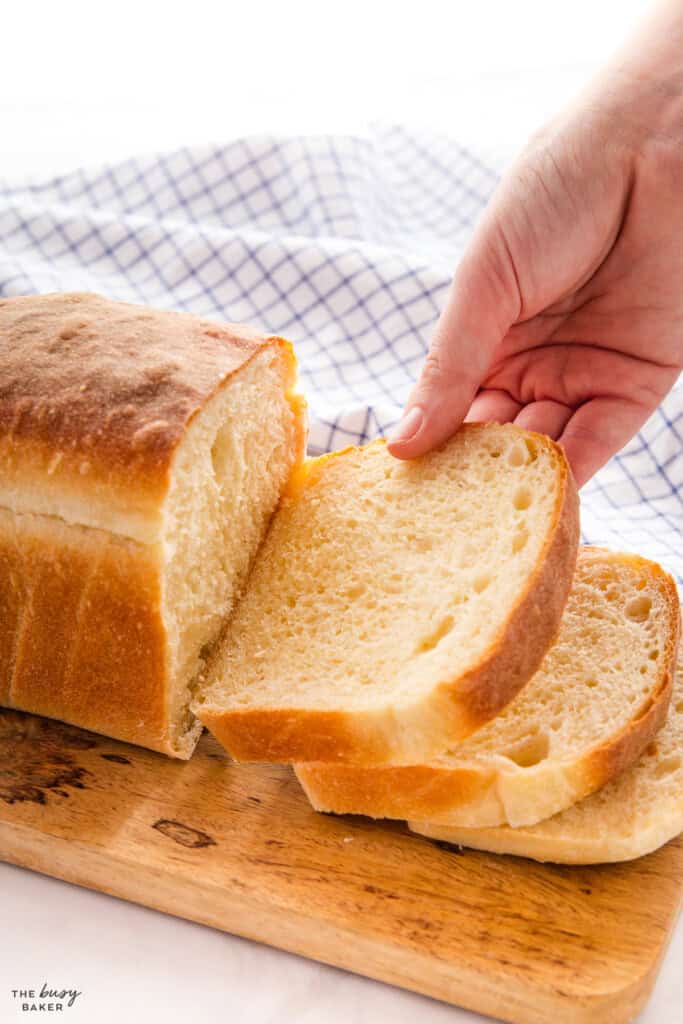
Here are some common issues you might encounter when making homemade potato bread and how we recommend fixing them.
Every flour has a different water absorption capacity so your dough might be looser. If that’s the case, feel free to add up to 10% more flour than the recipe suggests, but be sure to add it gradually and stop when the dough has reached the right texture. Adding too much flour can cause the bread to be too dry and tough.
If your oven doesn’t get up to the set temperature, you might have to prolong the cooking time or even place the rack with the bread higher to get the desired color on your bread.
If your bread gets too toasty, decrease the oven temperature by 10-15 degrees Celsius or 20-25 degrees Fahrenheit and shorten the baking time once you’ve removed the lid.
Cracks in the bread’s crust mean that you didn’t score the bread deeply enough. Make sure you use a very sharp knife or a scoring blade and make cuts about half an inch (one to two centimetres) deep.
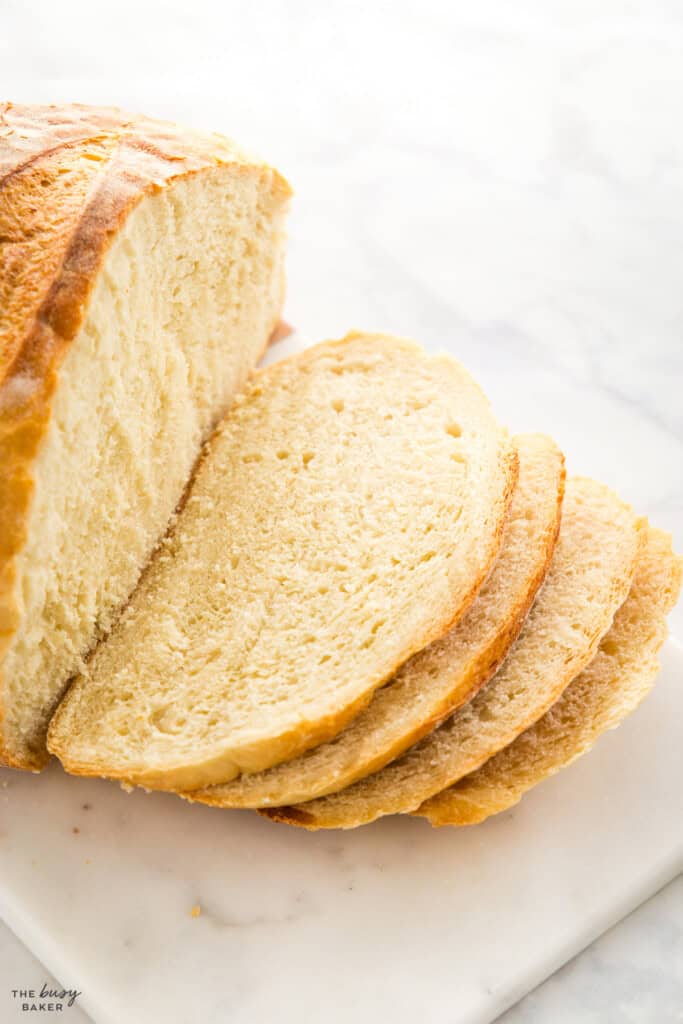
Because you can make this Potato Bread either as two sandwich loaves or as one large round loaf, you can use either 2 standard loaf pans or a Dutch Oven pot for this recipe.
In our opinion, a Dutch Oven pot is one of the best investments you can ever make for your kitchen. We use our Le Creuset Dutch Oven several times a week for soups, stews, sauces, curries, and of course for baking bread. In The Busy Baker Kitchen we’ve also tested cast iron Dutch Ovens from other brands, like THIS ONE from KitchenAid , THIS ONE from Lodge Cast Iron, and THIS ONE from Amazon Essentials if you’re looking for something a little less expensive, but still high quality that will work just as well (all paid links)
In addition to something to bake your bread in, you’ll need these items (paid links)
- Stand Mixer (optional)
- measuring cups and spoons
- mixing bowl
- Potato Ricer
- Silicone Spatula
- Kitchen Towel
- large knife
- Bread Knife
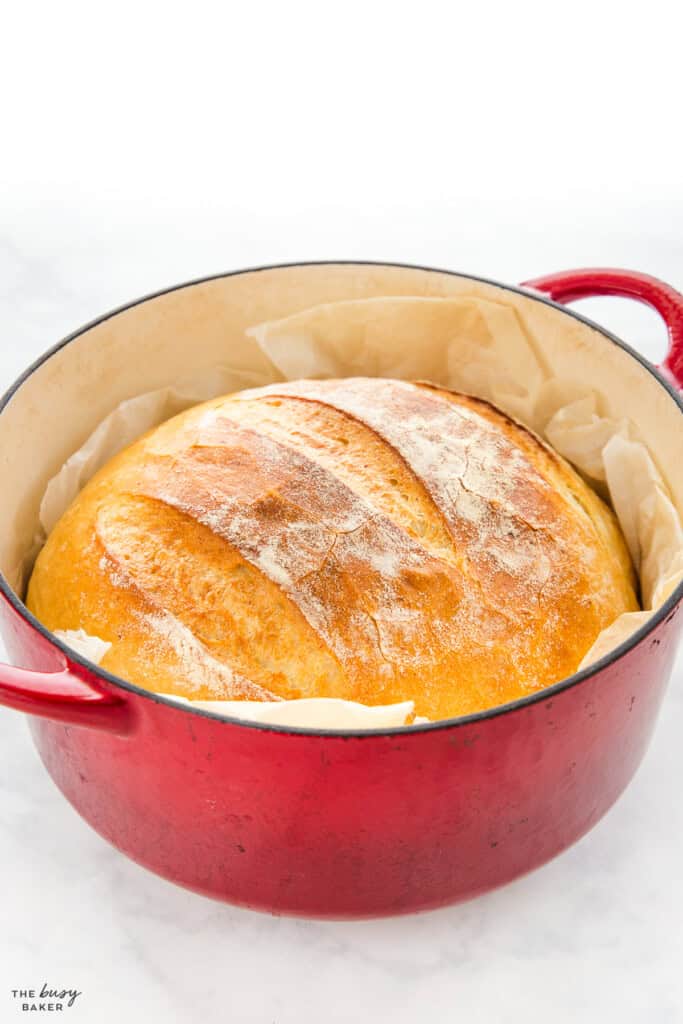
You’ll need these basic ingredients to make this potato bread recipe (paid links):
- 2 cups water
- 1 tablespoon yeast
- 1 tablespoon sugar
- 5 1/2 cups all purpose flour
- 4 teaspoons salt
- 1 cup cooked potatoes (baked or mashed, feel free to use leftover mashed potatoes)
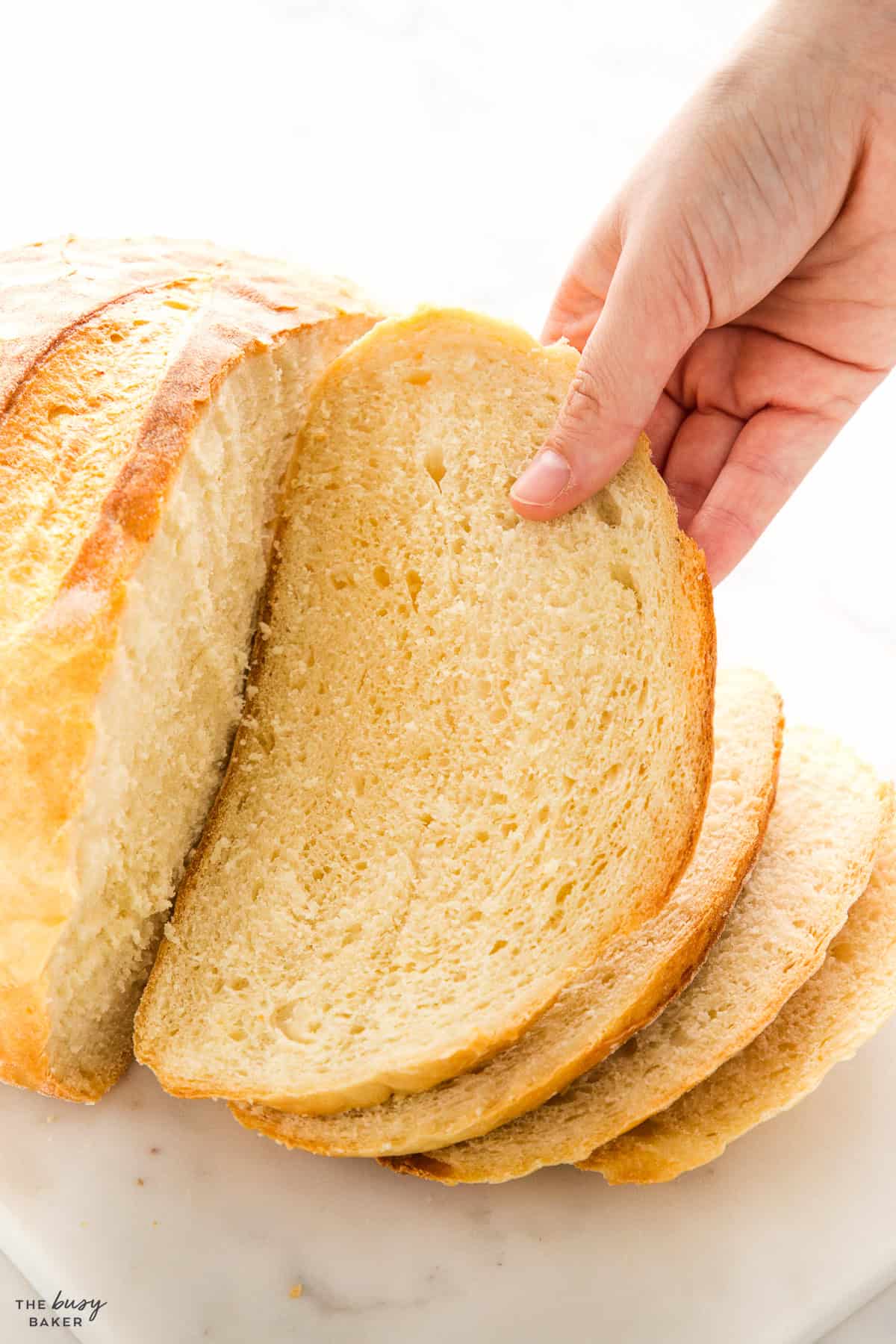
Time needed: 2 hours and 5 minutes
Here’s how to make this delicious potato bread!
- Make your dough.
In the bowl of your stand mixer, or in a large bowl by hand, mix the water with the yeast, the sugar and half the flour. Let bubble for 10-15 min.
Add the riced potatoes (be sure they’re cooled to room temperature first!) and mix well. Add the rest of the flour and the salt and knead until the dough comes off of the mixer bowl wall (about 5 minutes). - Let it rise.
Cover with a clean kitchen towel or plastic wrap and let the dough rise for 45 minutes to 1 hour in a warm place, until the dough doubles in size.
- Shape & let rise for a second time.
Turn the dough out onto a lightly floured work surface. To form a round loaf, roll it out into a square, then bring the corners to the middle. Repeat and flip it onto a piece of parchment paper.
Let it rise for another 20-25 minutes on the counter, covered with the kitchen towel or plastic wrap. - Prepare for baking.
Preheat your oven and the Dutch oven (with lid) to 435 degrees Fahrenheit (225 degrees Celsius) .
When your bread is done the second rise, remove the pot from the oven, add 3/4 cup warm water to the bottom and, on top of the water, add the bread with the parchment paper. Be careful so that the water doesn’t go up onto the parchment – avoid getting the dough itself wet.
Score your bread. You can chose to score it in a cross pattern, or make three parallel lines or just get creative. Make sure you have at least one big score of about half an inch (1 cm) deep on the surface of the bread. - Bake.
Put the lid on and bake at 435 degrees Fahrenheit (225 degrees Celsius) for 20 minutes.
Remove the lid, lower your oven temperature to 400 degrees Fahrenheit (200 degrees Celsius) and bake your bread for another 20-25 minutes.
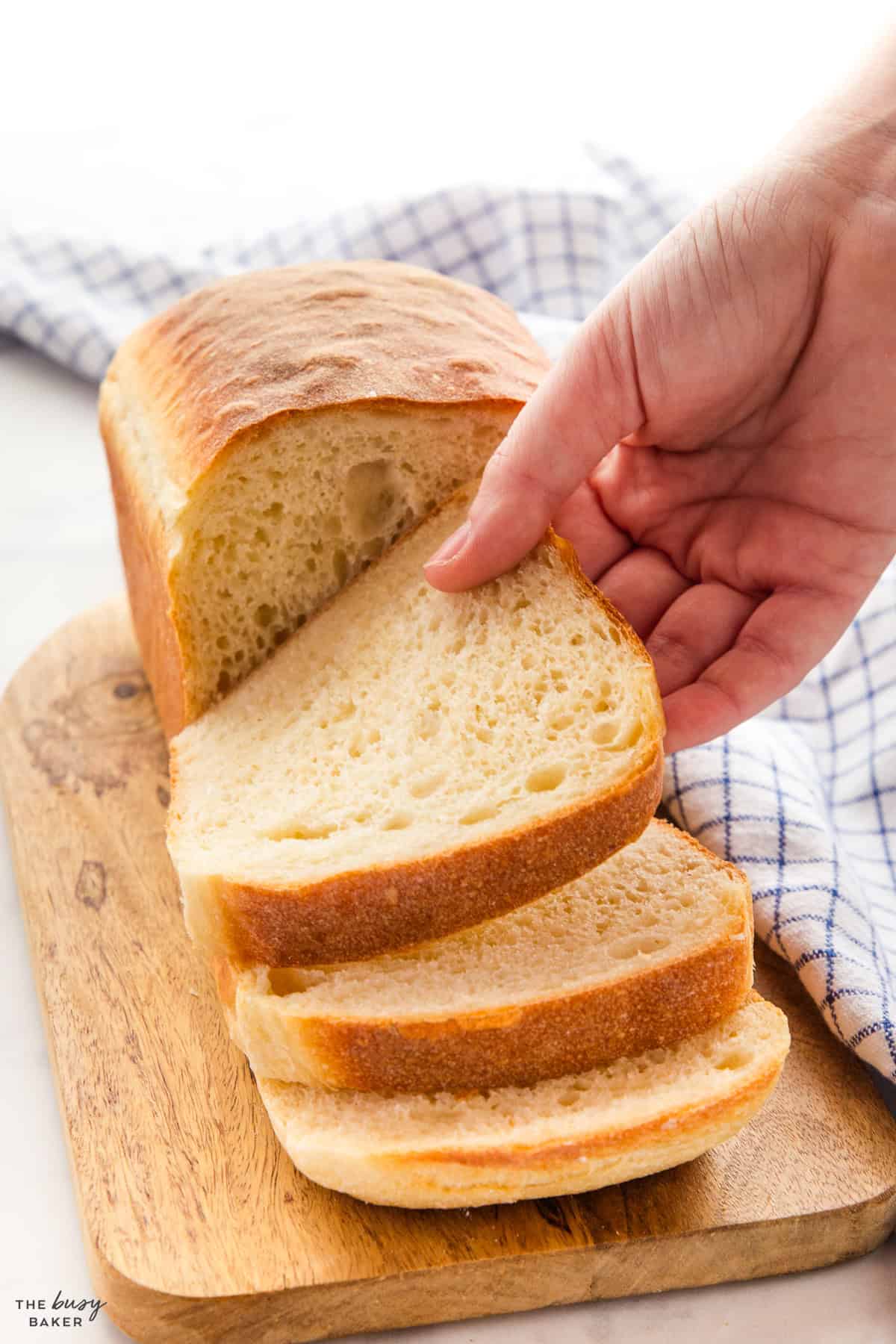
What is potato bread?
Potato bread is a typically white bread enriched with mashed boiled or baked potatoes. The added potatoes make the bread softer and fluffier and add tenderness to the dough.
How to best prep potatoes for potato bread?
As you prep potatoes for this recipe it’s important to limit the amount of extra moisture you will add. You’ll need about two medium size potatoes. Our favourite ways to prep the potatoes for this bread are: bake them with the skin on in a microwave or Air Fryer, or boil them whole with the skin on. If you want to use cubed boiled potatoes, boil them until fork tender and make sure that you let them steam after you drain them so they lose some of the moisture. Or, you can even use leftover mashed potatoes.
How long is potato bread good for?
This potato bread keeps well in an airtight container for up to 5 days
Can potato bread be frozen?
Sure! You can bake this dough in 2 loaves and freeze one for later. To thaw it, just leave it out on the counter overnight or, optionally, let it thaw a bit and warm it up in an oven or toaster.
What potatoes are best for potato bread?
The best potatoes for this recipe are the high-starch potato varieties, like Russet potatoes but you can also use medium-starch potatoes like Yukon Golds.
Does potato bread contain potato starch?
This potato bread contains natural potato starch from the mashed potatoes, however there’s no extra potato starch added.
Is this Potato Bread gluten free?
No, this Potato Bread recipe is not gluten free. To make a gluten-free potato bread use a gluten free flour that performs similarly to all purpose flour.
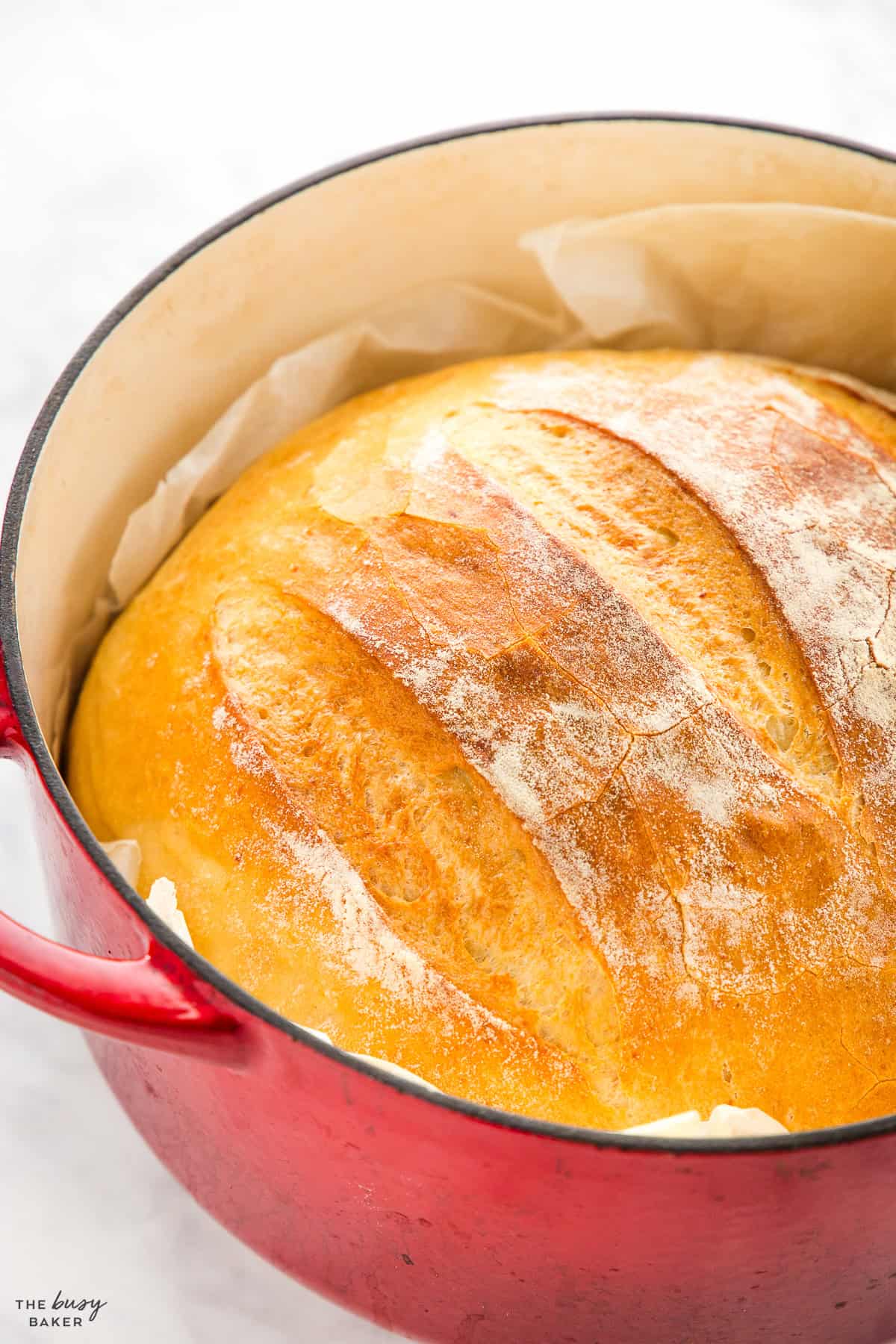
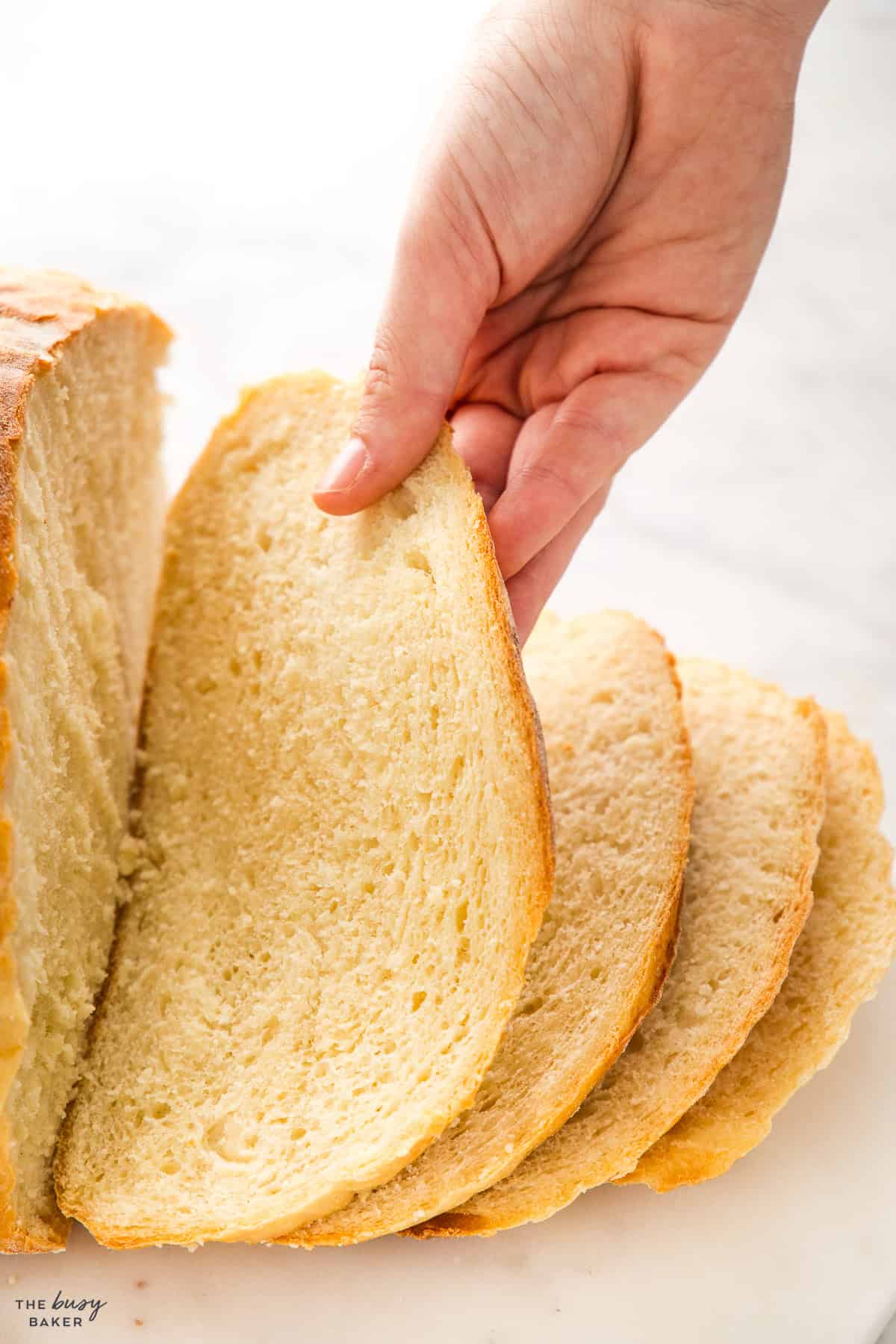
We hope you love this delicious bread recipe as much as we do! Let us know in the comments below, what’s your favourite homemade bread recipe? We’d love to know!
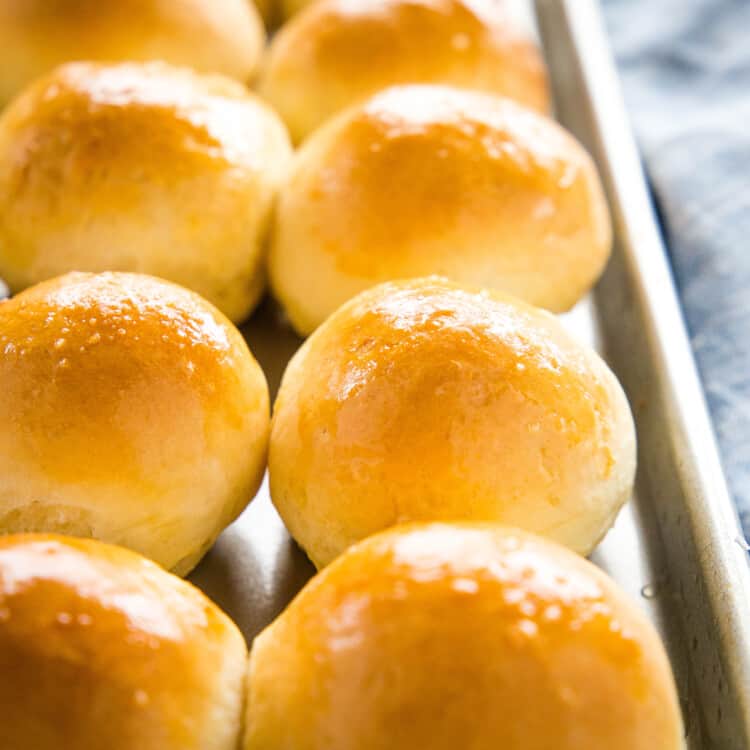
Join the November Baking Challenge!
Simply join our Facebook Community, make these EASY One-Hour Dinner Rolls, and post a photo for a chance to win a $100 Amazon Gift Card! PLUS every person who joins will receive a FREE Baking E-Cookbook!
- Easy Homemade Naan Bread
- Cinnamon Sugar Pull-Apart Bread
- Easy Homemade French Bread
- Cinnamon Rolls
- No Knead Jalapeno Cheese Artisan Bread
- Quick No Knead Bread
- Garlic Knots
- Best Ever Rosemary Focaccia Bread
- Swedish Cinnamon Buns (Kanelbullar)
- Homemade Dinner Rolls
- Easy No Knead Cinnamon Raisin Artisan Bread
If you made this, share a photo!
Are you trying this recipe? Use the comment form below to share your take; now with support for image uploads and comment voting!
Potato Bread
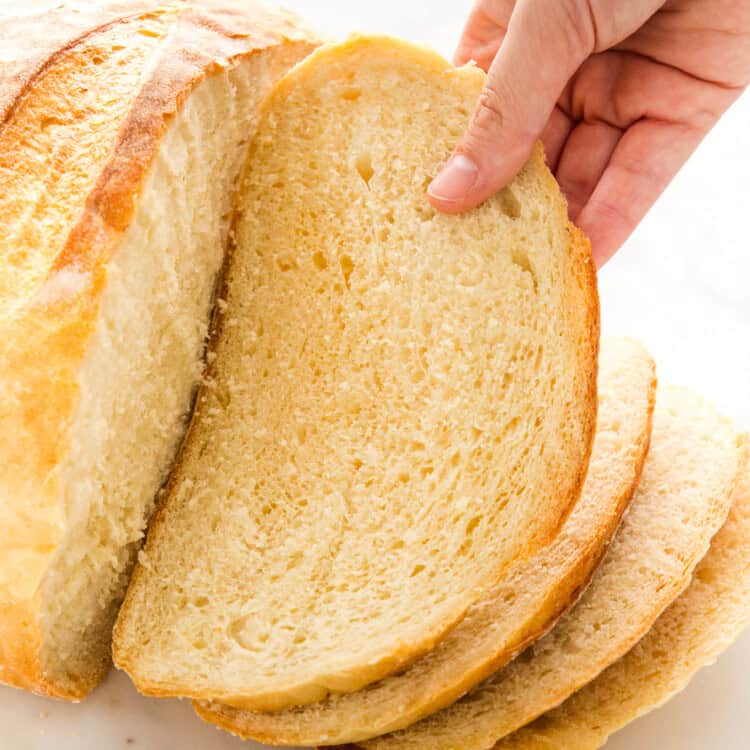
Recipe: Equipment
Recipe: Ingredients
- 2 cups water
- 1 tablespoon active dry yeast
- 1 tablespoon sugar
- 5 1/2 cups all purpose flour
- 4 teaspoons salt
- 1 cup mashed potatoes check the notes for the best way to prepare the potatoes
Recipe: Instructions
- In the bowl of a stand mixer with the dough hook, or in a large mixing bowl by hand, mix the water with the yeast, the sugar, and half the flour. Let bubble for 10-15 minutes.
- Add the riced potatoes (cooled to room temperature) and mix well. Add the rest of the flour and the salt and knead until the dough comes off of the mixer bowl wall (about 5 minutes)
- Cover with a clean kitchen towel or plastic wrap and let rise for 45 minutes to 1 hour in a warm place.
- Turn the dough out onto a lightly floured work surface and roll it out into a square. Bring the corners to the middle. Repeat and flip onto a piece of parchment paper.
- Let it rise for another 20-25 minutes on the counter, covered with the kitchen towel or plastic wrap.
- Preheat your oven and the Dutch oven (with lid) to 435 degrees Fahrenheit (225 degrees Celsius).
- When your bread is done the second rise, remove the pot from the oven, add 3/4 cup warm water to the bottom and, on top of the water, add the bread with the parchment paper. Be careful so that the water doesn’t go up on the parchment paper and get the dough wet.
- Score your bread. You can chose to score it in a cross pattern, or make three parallel lines or just get creative. Make sure you have at least one big score of about half an inch (1 cm) deep on the surface of the bread.
- Put the lid on and bake at 435 degrees Fahrenheit (225 degrees Celsius) for 20 minutes.
- Remove the lid, lower your oven temperature to 400 degrees Fahrenheit (200 degrees Celsius) and bake your bread for another 20-25 minutes.
- Let the bread cool completely (remove it from the pot right after it's done, to a wire cooling rack) and slice it only after it's cooled to room temperature.
Recipe: Notes
How to Prepare the Potatoes
As you prep potatoes for this recipe it’s important to limit the amount of extra moisture you will add. You’ll need about two medium size potatoes. Our favourite ways to prep the potatoes for this bread are: bake them with the skin on in a microwave or Air Fryer until soft, or boil them whole with the skin on. If you want to use cubed boiled potatoes, make sure that you let them steam after you drain them so they lose some of the moisture. Or, you can even use leftover mashed potatoes (be sure to run them through the potato ricer before adding them to remove any lumps).Storage and Freezer Instructions
This bread keeps well in a paper bag or rolled in a kitchen towel in a resealable bag or airtight container on the counter for up to 5 days. You can freeze this bread in a freezer safe bag or container and it’s good for up to 3 months, if properly kept in the freezer.How to Make 2 Sandwich Loaves with this Recipe
For two sandwich loaves, divide the dough in half and then form a square with each one. Roll the dough from one end to the other, then tuck in the ends to form a sandwich loaf. Place each loaf in a loaf pan that’s been greased and lined with parchment paper and let the loaves rise for 20-25 minutes, covered with plastic wrap or a kitchen towel. Bake at 400 degrees Fahrenheit (200 degrees Celsius) for about 17-20 minutes, or until the crust is golden brown. Let the loaves sit in their pans for several minutes before turning them out onto a wire rack to cool completely before slicing.Recipe: Nutrition
Notice: Nutrition is auto-calculated, using Spoonacular, for your convenience. Where relevant, we recommend using your own nutrition calculations.
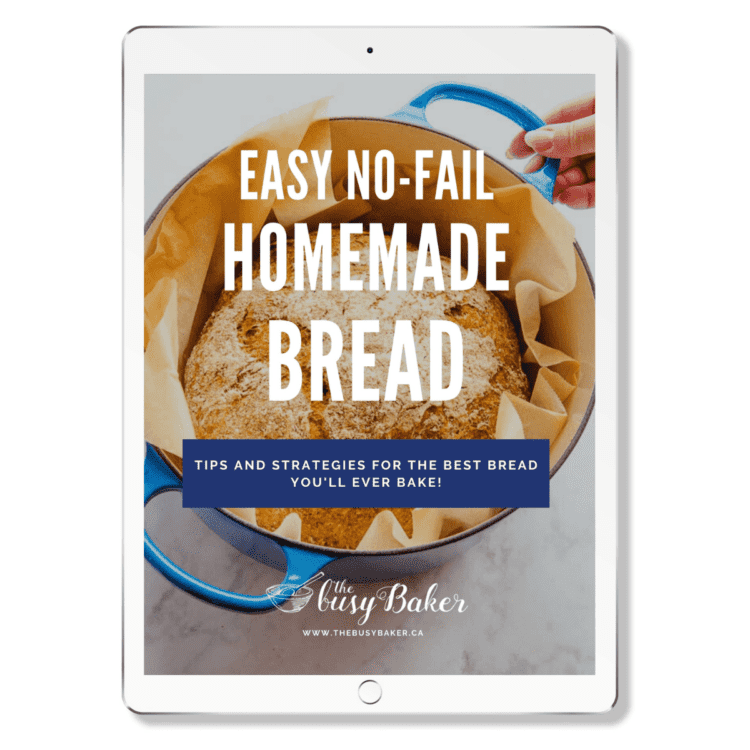
EASY NO-FAIL HOMEMADE BREAD RECIPES AND BAKING TIPS
Get my easy no-fail bread baking e-cookbook!
